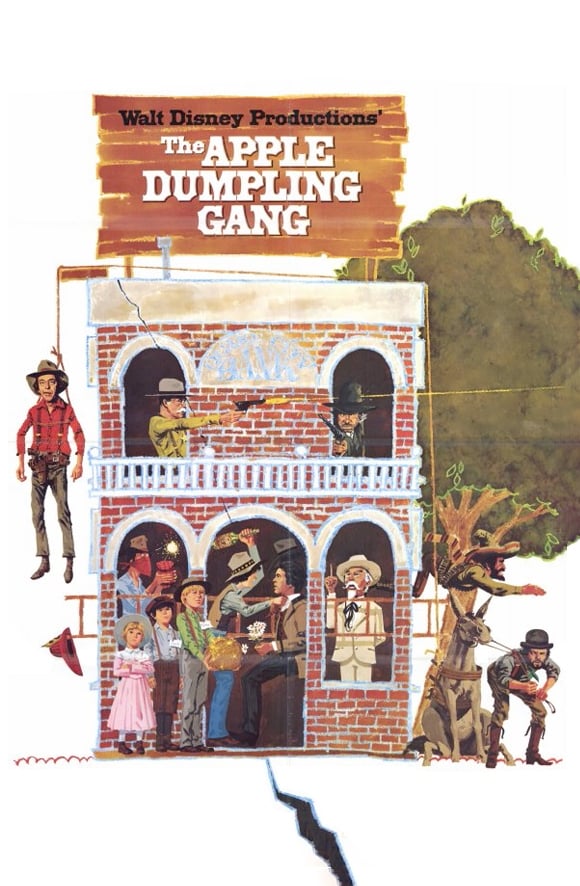
A roving bachelor gets saddled with three children and a wealth of trouble when the youngsters stumble upon a huge gold nugget. They join forces with two bumbling outlaws to fend off the greedy townspeople and soon find themselves facing a surly gang of sharpshooters.
01 May The Apple Dumpling Gang (1975)
Good Three-way Storytelling
I’m usually appalled at how vintage Disney (of about 1940-80) ignored the basics of good storytelling, relying instead on cinematic gimmicks.
Sometimes it worked, sometimes not, but when you just simply don’t invest in good storytelling, you plant poison that somehow catches up with you. The primary reason that I remembered this fondly is that it was that rare project where lots of attention was spent on story structure. It is engineered for lowbrow effect of course, but that is beside the point.
The two main story threads are:
— a pair of hapless cowboy bandits, whose every move is comedic. It is simple Laurel and Hardy stuff with better facial expressions, and it is this that provides the entertainment value.
— a story about the essential power of the nuclear family. It was still the 1950 notion, involving 3 children. They sacrifice wealth in exchange for parents, while Dickensian characters circle around. This provides — even now — the “nourishment” value.
The two threads are interwoven in rather brilliant fashion with encounters between the two lost parties (children and adults) few and clear. They meet initially when the erstwhile crooks believe they are to be captured. They meet a second time when they form the Apple Dumpling Gang to steal the children’s gold nugget. They meet only a third significant time at the end when the now mommy and daddy adopt both the children and the virtual children.
There are many architectural correspondences that work with this and the internal cinematic references. For instance, we have a red “hook and ladder wagon” that we see three times after we are told that the town has one: when it is poses a threat to the little girl who is rescued by the hero; when its ladder is stolen for the bank robbery; and when that same little girl is kidnapped by the real robbers and a chase ensues.
This is because Disney at this period had a story lab that was looking at what they considered narrative dynamics. We know much more today, but in that era, the threes came about because there was a deliberate weave of three genres.
— The standard western where a Maverick-like character rides into town as a loner and wins someone’s heart. Here it is the town redhead. He wears the standard gambler garb, and we track him at the important beginning where the terms of the story are established.
— A comedy genre based on a combination of slapstick and Marx brothers quality dialog.
— A family movie where what is now called “family values“ are celebrated in a lighthearted fashion, but deeply acknowledged.
Given this establishment of the three genres, the script was designed around the rule of threes. For instance, the gambler saving the girl from the fire engine is for the family genre; the chase in the fire wagon at the end is standard Hopalong Cassidy fare; and the bit in the middle where the ladder is stolen while the fireman sleeps is from the Marx tradition.
Posted in 2009
Ted’s Evaluation — 3 of 3: Worth watching.


No Comments